CROP BIOTECH UPDATE
---------------------------------------------------------------------------
A weekly summary of world developments in agri-biotech for developing countries, produced by the Global Knowledge Center on Crop Biotechnology, International Service for the Acquisition of Agri-biotech Applications SEAsiaCenter (ISAAA)
---------------------------------------------------------------------------
May 22, 2019
In This Week’s Issue:
News
Global
• University of Michigan Puts Spotlight on Smarter Food Systems to Attain Zero Hunger
Africa
• Ethiopian Women in Biosciences Trained on Science Communication
Americas
• Software Locates Sugarcane Genes of Interest
• Scientists Use Open-Source Genetic Analysis Method in Plant Cells for the First Time
• Technology to Measure Plant Improvements Helps Boost Production
Asia and the Pacific
• US to Help Pakistan Introduce GE Corn
• UC Professor Emerita Emphasizes on Gene Editing to Achieve Sustainability Needs
Europe
• Scientists Discover RNA Controlling Tuber Formation in Potatoes
• Iron-rich GM Wheat Set to Undergo Field Trials
Research
• Sweetpotato Enzymes Expressed in Arabidopsis Revealed Additional Functions of VEPs
• Research Shows How Transposon Insertion Confers Resistance to Bt Cotton in Pink Bollworm
New Breeding Technologies
• Experts Use CRISPR-Cpf1 for Cotton Genome Editing
• Successful Deletion of Rice Retrotransposon Using CRISPR-Cas9
Beyond Crop Biotech
• Scientists Sequence Charleston Gray Watermelon
----
NEWS
----
Global
UNIVERSITY OF MICHIGAN PUTS SPOTLIGHT ON SMARTER FOOD SYSTEMS TO ATTAIN ZERO HUNGER
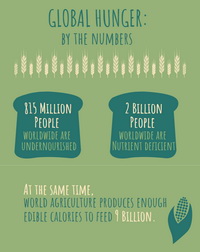 Researchers from the University of Michigan (UM) reviewed the scholarly papers discussing the Zero Hunger goal of the United Nations and found that many scholars focused too narrowly on increasing crop productivity and missed other critical aspects of the food system. The review is published in the journal World Development.
Researchers from the University of Michigan (UM) reviewed the scholarly papers discussing the Zero Hunger goal of the United Nations and found that many scholars focused too narrowly on increasing crop productivity and missed other critical aspects of the food system. The review is published in the journal World Development.
The study focused on scholarly papers from three disciplinary areas (ecology and agricultural sciences, nutrition and public health, and political economy and policy science) that tackled UN's Zero Hunger goal. It was found that most of the papers were focused on boosting the yield of crops. The UM researchers stressed that according to UN, 815 million people are undernourished, and as many as 2 billion suffer from nutrient deficiencies, but the world agriculture produces enough edible calories to feed 9 billion people. Thus, they concluded that the most effective way towards the Zero Hunger goal is to put more attention to other details such as nutritional quality of diets and development of policies that increase equity and access to food.
Read the original news article from the University of Michigan and the review article in World Development.
Africa
ETHIOPIAN WOMEN IN BIOSCIENCES TRAINED ON SCIENCE COMMUNICATION
Ethiopian women scientists have identified effective science communication as key to stimulating informed pro-science policy decisions and public trust. This came up during Ethiopia's inaugural women for bioscience communication training held in Addis Ababa on May 8-9, 2019.
While opening the two-day workshop, Dr. Kassahun Tesfaye, Director General, Ethiopian Biotechnology Institute (EBTi), stressed on the role effective communication plays in galvanizing public acceptance of biotech products. "Without appropriate communication strategies, diffusion of safe biotech products and development would be difficult, leading to huge opportunity costs to society," remarked Dr. Kassahun.
Participants learned the importance of simplifying scientific terminologies when communicating with non-technical audiences, effective media engagement strategies and stakeholder mapping. Dr. Margaret Karembu, Director of ISAAA AfriCenter, challenged the participants to tell stories about what they do and not to let others miscommunicate their work. "The world is being run through storytelling and science has become an exciting story. However, most African scientists have sat back and allowed others to tell the African science story," This, she noted has given room for misrepresentation of scientific facts and miscommunication, further widening the gap between science and society.
Dr. Mestawet Taye, researcher from Hawassa University, Ethiopia, commended the training citing a myriad of challenges that scientists face when communicating. "I am very happy to be part of this training. Before, I had many challenges communicating my research to policy makers and engaging the media. The skills acquired from this training will help me engage different stakeholders better for my work to benefit our communities." Mestawet stressed.
The training was part of a concerted effort by African Women for Biosciences (AWfB), ISAAA AfriCenter and EBTi, to equip Ethiopian women in biosciences with communication skills to translate ongoing bioscience initiatives into viable enterprises for building a vibrant bioeconomy.
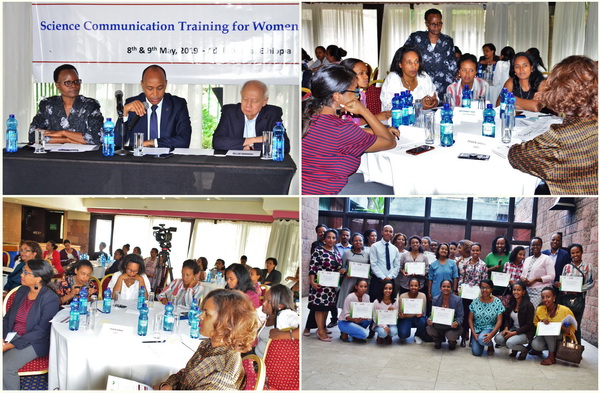
For more information on the training, contact Dr. Margaret Karembu at mkarembu@isaaa.org.
Americas
SOFTWARE LOCATES SUGARCANE GENES OF INTEREST
The sugarcane grown today is a hybrid from two species, Saccharum officinarum – the original sugarcane domesticated in India 3,000 years ago – and S. spontaneum. The genome of sugarcane which was completed a few months ago contains 10 billion base pairs in 100-130 chromosomes, three times the size of the human genome.
According to Marcelo Falsarella Carazzolle, bioinformatics coordinator in the Genomics and Bioenergy Laboratory at the University of Campinas's Biology Institute (IB-UNICAMP) in São Paulo, Brazil, the sugarcane genome has grown to be a giant, and working on it with current genomic methods is difficult. Carazzolle and his team developed a different strategy which is much less costly and time consuming, designed to map specific portions of the genomes of polyploid plants.
The research team developed Polyploid Gene Assembler (PGA), a software that will help reconstruct complex genomes such as the sugarcane's. PGA focused on small portions of the genome, corresponding to about 1%-2%, exactly where the genes of interest are located. Carazzolle's team identified a total of 39,234 genes, 60.4% of which were clustered into known grass gene families.
"Our findings for the genome of S. spontaneum highlighted for the first time the molecular basis of certain significant characteristics, such as high productivity and resistance to biotic and abiotic stress. These results can be used in future functional and genetic studies. They will also support the development of new sugarcane varieties."
For more details, read the news article in Agência FAPESP.
SCIENTISTS USE OPEN-SOURCE GENETIC ANALYSIS METHOD IN PLANT CELLS FOR THE FIRST TIME
Scientists at the U.S. Department of Energy's Lawrence Berkeley National Lab (Berkeley Lab) have successfully used an open-source RNA analysis platform for the first time in an effort that could help engineer more efficient food and biofuel crops.
Drop-seq, developed at Harvard Medical School in 2015, is a popular method for measuring the RNA present in individual cells, allowing scientists to see what genes are being expressed and how this relates to the specific functions of different cell types. However, the freely shared protocol has only been used in animal cells. Diane Dickel, a scientist from Berkeley Lab pointed out that this is important in understanding plant biology. Dickel said that plants, like humans and mice, have multiple cell and tissue types, but unlike animals, plants have cell walls, which make it hard to open the cells up for genetic study.
While Dickel was interested in using Drop-seq in plants, some were skeptical. To run plants cells through a single-cell RNA-seq analysis, they must be protoplasted, a process that will strip their cell walls using enzymes. Dickel and her colleagues at DOE Joint Genome Institute (JGI) teamed up with researchers from UC Davis who had perfected a protoplasting technique for root tissue from Arabidopsis thaliana. After preparing samples of more than 12,000 Arabidopsis root cells, the group was thrilled when the Drop-seq process went smoother than expected.
For more details, read the news release from the Berkeley Lab.
TECHNOLOGY TO MEASURE PLANT IMPROVEMENTS HELPS BOOST PRODUCTION
An international research team is using advanced tools to develop crops that give farmers more options for sustainably producing more food on less land.
"The method we developed allows us to measure improvements we have engineered in a plant's photosynthesis machinery in about 10 seconds, compared to the traditional method that takes up 30 minutes," said Katherine Meacham-Hensold, a postdoctoral researcher at the University of Illinois, who led the team for the project Realizing Increased Photosynthetic Efficiency (RIPE).
The traditional method for assessing photosynthesis analyzes the exchange of gases through the leaf. A faster, or "higher-throughput" method, called spectral analysis, analyzes the light that is reflected back from leaves to predict photosynthetic capacity in as little as 10 seconds. Before the study, the team was unsure if spectral techniques can be used for plants with genetically altered photosynthetic machinery. Now they can apply spectral techniques to predict the photosynthetic capacity of genetically modified crops.
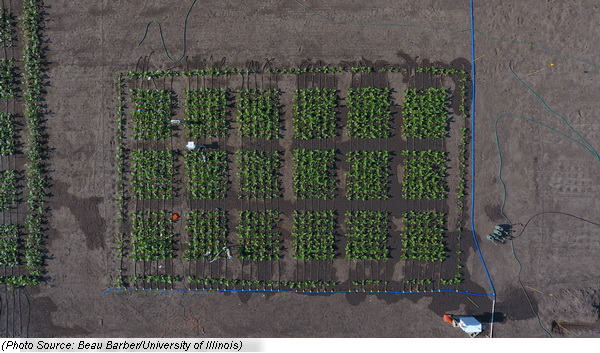
For more details, read the news article from RIPE.
Asia and the Pacific
US TO HELP PAKISTAN INTRODUCE GE CORN
The Foreign Agricultural Service (FAS) of the United States Department of Agriculture (USDA) has announced that future collaborative projects between the U.S. and Pakistan would include using American soybean feed in poultry, fish farming, and dairy industries; introducing genetically engineered (GE) maize; and working with various government agencies to develop uniform food safety standards.Casey E. Bean, USDA official based in the US Embassy in Islamabad said that they are working collaboratively with the government and the industry not only in poultry but also in the new and exciting area of fish farming which is in the pipeline. They are also assisting in the approval of GE maize as it is currently being considered in Pakistan. "It would offer farmers a tool to increase their production and reduce use of agricultural chemicals," he claimed.
Bean said that the USDA is working with the Department of Commerce, the Ministry of National Food Security, and the agribusiness sector to implement uniform food safety standards and the Federal Government's food security experts would provide insights in adapting international standards.
For more information, read the article in The Dawn.
UC PROFESSOR EMERITA EMPHASIZES ON GENE EDITING TO ACHIEVE SUSTAINABILITY NEEDS
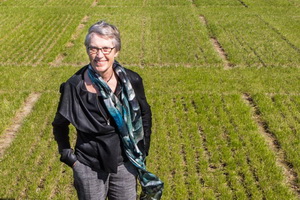 University of Canterbury's (UC) newest Professor Emerita Paula Jameson has spoken about how important it is to consider gene editing as a tool to improve crop production to meet the sustainability demands of New Zealand. A UC alumna who holds double majors in plant physiology and chemistry and a PhD on wheat and cytokinins, Prof. Jameson sees gene editing as one technique that has a lot of potential to achieve the Aotearoa New Zealand's targets towards zero carbon in its agronomic systems.
University of Canterbury's (UC) newest Professor Emerita Paula Jameson has spoken about how important it is to consider gene editing as a tool to improve crop production to meet the sustainability demands of New Zealand. A UC alumna who holds double majors in plant physiology and chemistry and a PhD on wheat and cytokinins, Prof. Jameson sees gene editing as one technique that has a lot of potential to achieve the Aotearoa New Zealand's targets towards zero carbon in its agronomic systems.
Citing genetic engineering, Prof. Jameson said that genetically engineered products have been around for well over a decade. The technology is not hardly new nor untested. While it is true that genetically engineered plants are not planted in New Zealand, the public has been consuming genetically engineered products like soybean and canola for years. This is when Prof. Jameson appeals to consider looking into gene-edited plants. She stressed how Aotearoa New Zealand legislation needs to accept gene editing as a problem-solving tool that does not need the same level of regulatory oversight that is required for plant genetic engineering, as in the case of other countries like the US and Canada.
Prof. Jameson then proceeds to explain that with gene editing, scientists can single out one gene and alter it very accurately. Instead of relying on natural mutations through traditional breeding techniques, gene editing can mimic these mutations in different cultivars. Moreover, using gene editing takes less time for the final product to come out and with accurate precision. She urges Aotearoa New Zealanders to become more aware of the benefits of gene editing, because gene-edited plants have more potential to increase yield and fight off environmental stress to help achieve New Zealand's sustainability targets.
Read more from University of Canterbury news.
Europe
SCIENTISTS DISCOVER RNA CONTROLLING TUBER FORMATION IN POTATOES
Potatoes are not heat-loving plants. In extremely high temperatures, potato plants form significantly lower numbers of tubers or sometimes none at all. A team of biochemists at the Friedrich-Alexander-Universität Erlangen-Nürnberg (FAU) have now discovered the reason why.
When temperature rises, a small RNA blocks tuber formation. The scientists have switched off this small RNA and produced potato plants that are more resistant to high temperatures, an important contribution to securing crop yields in the future in view of climate change.
For the highest yields, potatoes need moderate temperatures around 21 degrees centigrade during the day and 18 degrees at night. At these temperatures and at the correct day length, a protein that induces the formation of tubers called SELF-PRUNING 6A (SP6A) is formed, which triggers tuber formation in the plant in prepation for colder periods. However, in warm temperatures, the plants form more green shoots and leaves and hardly any or no tubers. The RNA is inactive at low temperatures. If temperatures rise, it blocks the formation of SP6A and thus the formation of tubers.
For more details, read the FAU news article.
IRON-RICH GM WHEAT SET TO UNDERGO FIELD TRIALS
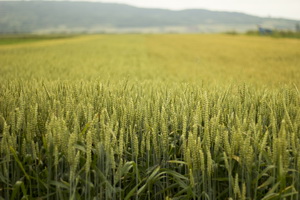 The John Innes Centre got the green light from the UK government to perform field trials of genetically modified (GM) wheat biofortified to produce high-iron white flour. The three-year field trial (from 2019 to 2022) will be carried out under confined conditions at the Centre between April and September each year.
The John Innes Centre got the green light from the UK government to perform field trials of genetically modified (GM) wheat biofortified to produce high-iron white flour. The three-year field trial (from 2019 to 2022) will be carried out under confined conditions at the Centre between April and September each year. Using genetic engineering, the researchers were able to transport one gene and activate it in the endosperm section which is the central part of the wheat seed. The endosperm is responsible for the production of white flour and normally has low iron content. At present, white flour is fortified with iron powder or iron salts to regulation levels of 16.5 micrograms per gram. Should the field trials go smoothly, it is expected to produce a new variety of wheat with increased iron content of 20 micrograms per gram.
According to Janneke Balk, project leader at the John Innes Centre, the team prioritized the development of white flour to encourage people to eat wholemeal products. "By producing high-iron white flour we can reach more people and make the biggest impact on public health," he added. Since it is a publicly-owned project, breeders and farmers can openly access and use the crop, subject to GM regulations.
For more information, read the news article from John Innes Centre.
Research
SWEETPOTATO ENZYMES EXPRESSED IN ARABIDOPSIS REVEALED ADDITIONAL FUNCTIONS OF VEPS
Vacuolar processing enzymes (VPEs) have been found to be involved in several key biological processes in plants particularly in programmed cell death, plant development, and responses to biotic and abiotic stresses, in part because of its similarities with apoptosis regulator caspase-1. A study published in BMC Plant Biology shows that VPE also plays a role in sucrose accumulation and fruit ripening.
Scientists from Jiangsu Normal University, China, assessed the functions of VPE from sweetpotato, first in expression pattern analyses of IbVPE1 during development and senescence. Overexpression of IbVPE1 in Arabidopsis led to reduced leaf sizes and numbers and early flowering, and further elucidated the molecular processes involved.
The results of the study showed the functions of the VPE gene family in development and senescence and in regulation of flowering times, leaf sizes and numbers, and senescence phenotypes in Arabidopsis.
Read the research article in BMC Plant Biology.
RESEARCH SHOWS HOW TRANSPOSON INSERTION CONFERS RESISTANCE TO BT COTTON IN PINK BOLLWORM
Insect resistant Bt crops are widely grown in many countries all over the world to prevent pest attacks in highly economical crops. However, the ability of pests to rapidly evolve resistance reduces the efficacy of Bt crops. In an article published by Scientific Reports, scientists from Hubei Academy of Agricultural Sciences and Chinese Academy of Agricultural Sciences reported that transposon insertion causes cadherin mis-splicing and confers resistance to Bt cotton in pink bollworm, a devastating pest of cotton globally.
The researchers found the allele (r15) harboring the insertion in a field population from China. They described the insertion as a miniature inverted repeat transposable element (MITE) with two additional transposons and produces two mis-spliced transcript variants. A strain homozygous for r15 had 290-fold resistance to Cry1Ac, little or no cross-resistance to Cry2Ab, and completed its life cycle on Bt cotton producing Cry1Ac. The researchers also reported that for transformed insect cells, susceptibility to Cry1Ac was higher for cells producing the wild-type cadherin than for cells producing the r15 mutant proteins.
The similar resistance of pink bollworm to Cry1Ac in laboratory- and field-selected insects from China, India and the U.S. provides a basis for developing international resistance management practices.
Read the open-access article in Scientific Reports.
New Breeding Technologies
EXPERTS USE CRISPR-CPF1 FOR COTTON GENOME EDITING
Various kinds of gene editing tools are necessary for functional genomic research in cotton, a plant species with a very complex genome. CRISPR-Cpf1, a new addition to the CRISPR-Cas9 system, has three common types of Cpf1 for genome editing: AsCpf1, LbCpf1 and FnCpf1. Recent research has shown that CRISPR-Cpf1 have been used successfully on rice, soybean, tobacco, and maize. Scientists from Huazhong Agricultural University and Xinjiang Academy of Agricultural Sciences in China reported an efficient CRISPR-Cpf1 system to expand the scope of genome editing in cotton.
Results indicated that the CRISPR-Cpf1 system for cotton genome editing has a very high efficiency (87%) with no off-target effects observed. The mutated characteristics were also found to be inherited by the next generation.
Based on the findings, the CRISPR-Cpf1 system is highly specific and efficient for plant genome editing.
For more details, read the research article in Plant Biotechnology Journal.
SUCCESSFUL DELETION OF RICE RETROTRANSPOSON USING CRISPR-CAS9
A successful example of transposon deletion using CRISPR-Cas9 as an alternative technique for plant breeding was presented by experts from National Agriculture and Food Research Organization (Japan) and Yokohama City University. The results of their study are published in Plant Cell Reports.
Studies have shown that transposition of transposable elements (TEs) has an impact on adjacent genes, which can lead to alterations in genetic traits, including expression levels and patterns, splicing and epigenetic status, and function of genes in or close to the added or removed locus may be affected. Intentional alteration of loci adjacent to TEs or TEs themselves using genome editing could mimic the naturally occurring translocation of TEs, and lead to development of novel plants. Thus, the researchers performed targeted deletion of Tos17 retrotransposon, which is flanked at both ends by long terminal repeat (LTR) sequences, through genome editing in rice.
Results showed successful targeted mutagenesis of the LTR, and targeted deletion between LTRs. From the transformed calli, the next generation of the regenerated plants lack Tos17. These results indicate successful deletion of the Tos17 retrotransposon from the rice genome using CRISPR-Cas9.
Read more about the study in Plant Cell Reports.
Beyond Crop Biotech
SCIENTISTS SEQUENCE CHARLESTON GRAY WATERMELON
Scientists from the U.S. Department of Agriculture (USDA) Agricultural Research Service (ARS) and their colleagues from various universities have sequenced "Charleston Gray," a watermelon variety that was introduced to the public in 1954 by ARS.
The scientists used the most advanced genomic technologies in the long-term study to sequence the "Charleston Gray" genome and genotyped an additional 1,365 watermelon lines from the USDA National Plant Germplasm System (NPGS). The research team has identified regions in the watermelon genomes that confer disease resistance or control several important fruit quality traits.
The research team, led by ARS geneticist Amnon Levi and Zhangjun Fei at the Boyce Thompson Institute (BTI), collaborated with scientists at BTI, North Carolina State University, Michigan State University, and West Virginia State University on evaluating the genetic diversity of USDA watermelon Plant Introduction (PI) collection.
For more details, read the USDA ARS press release.
(c) 2025. ISAAA.
 Researchers from the University of Michigan (UM) reviewed the scholarly papers discussing the Zero Hunger goal of the United Nations and found that many scholars focused too narrowly on increasing crop productivity and missed other critical aspects of the food system. The review is published in the journal World Development.
Researchers from the University of Michigan (UM) reviewed the scholarly papers discussing the Zero Hunger goal of the United Nations and found that many scholars focused too narrowly on increasing crop productivity and missed other critical aspects of the food system. The review is published in the journal World Development. 

 University of Canterbury's (UC) newest Professor Emerita Paula Jameson has spoken about how important it is to consider
University of Canterbury's (UC) newest Professor Emerita Paula Jameson has spoken about how important it is to consider  The John Innes Centre got the green light from the UK government to perform field trials of genetically modified (GM) wheat biofortified to produce high-iron white flour. The three-year field trial (from 2019 to 2022) will be carried out under confined conditions at the Centre between April and September each year.
The John Innes Centre got the green light from the UK government to perform field trials of genetically modified (GM) wheat biofortified to produce high-iron white flour. The three-year field trial (from 2019 to 2022) will be carried out under confined conditions at the Centre between April and September each year.